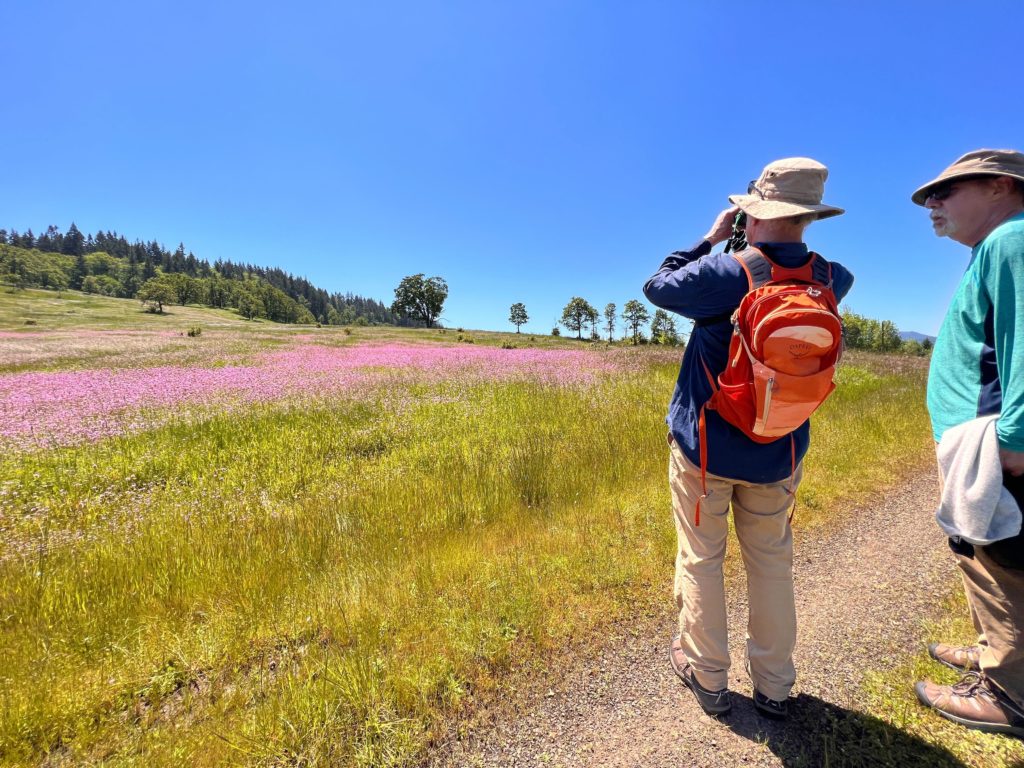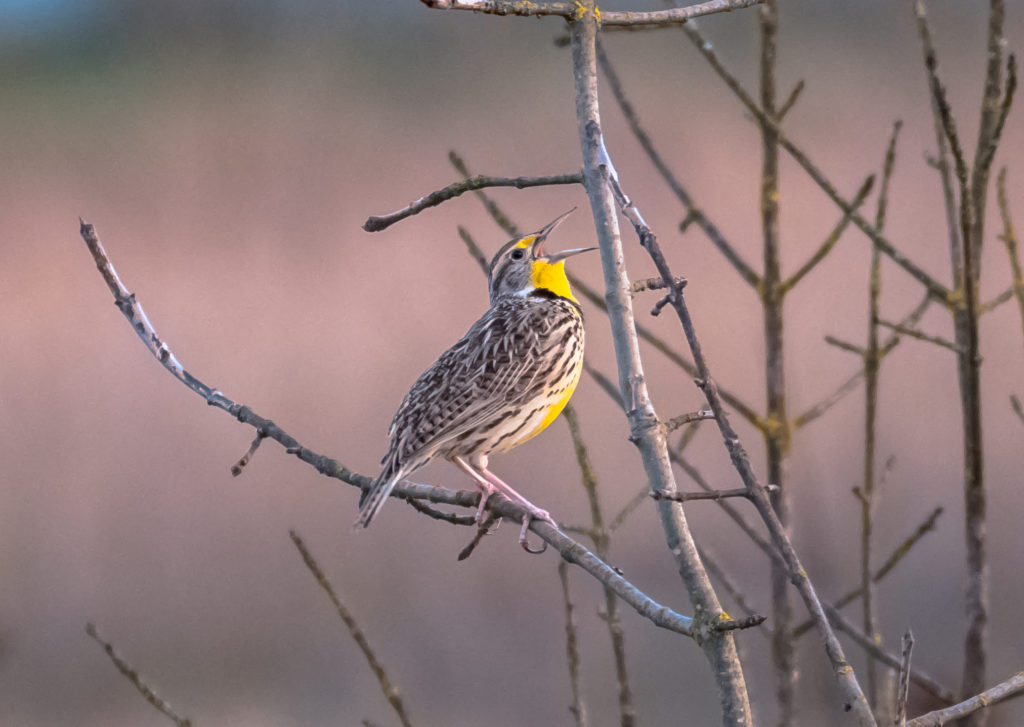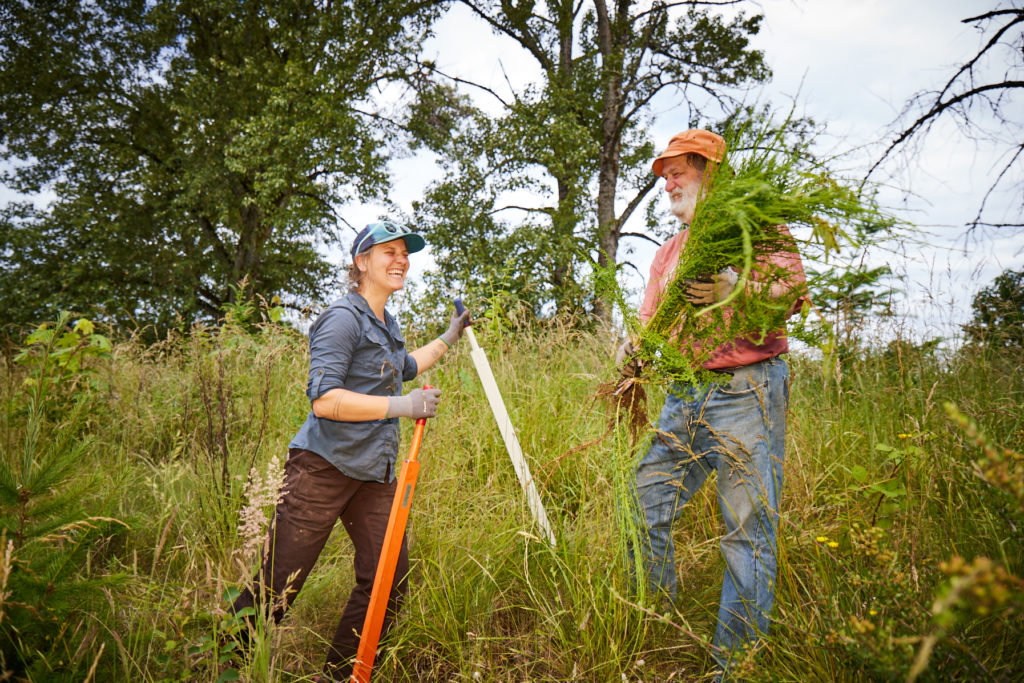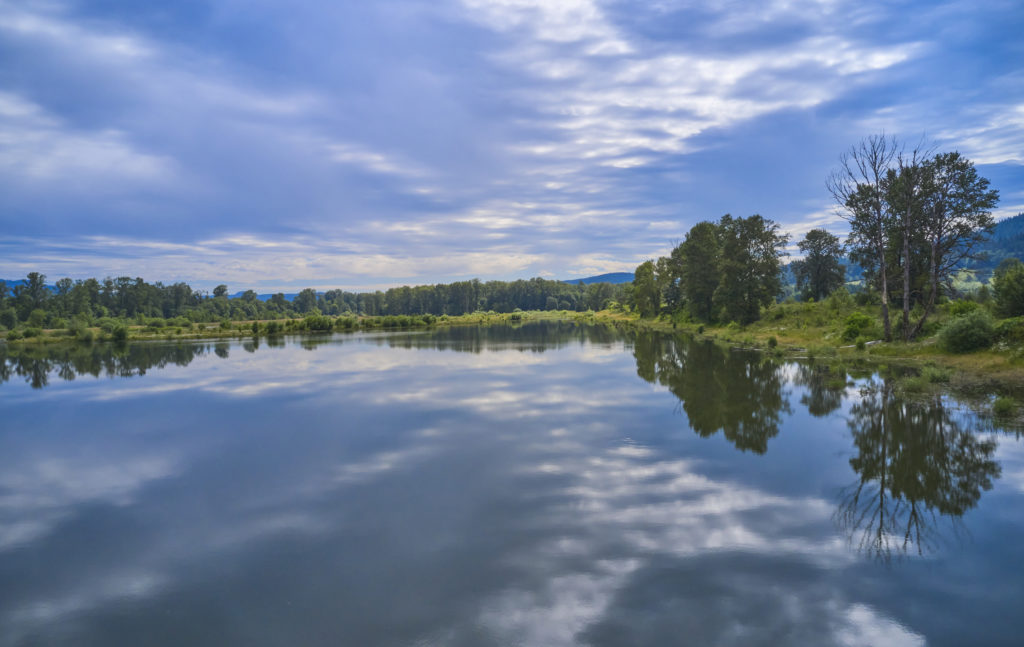
Visitors look for birds beyond a field of blooming sea blush during a property tour at the Willamette Confluence Preserve.
After a decade of habitat restoration and successful reconnection of the river to its historic floodplain, The Nature Conservancy (TNC) has completed the transfer of the Willamette Confluence Preserve, a 1,305-acre natural area, to a local conservation organization, McKenzie River Trust (MRT).
The Willamette Confluence Preserve rests between the Coast Fork and Middle Fork of the Willamette River. In the last century, the site was a source of gravel and other aggregate materials used to build the roads and buildings of Eugene and Springfield.
In 2010, TNC purchased the property from Wildish Sand and Gravel Company with financial support from the Bonneville Power Administration (BPA), the Oregon Watershed Enhancement Board (OWEB), and the Doris Duke Charitable Foundation. Since that time TNC staff have carried out site restoration projects to improve water quality, fish and wildlife habitat, and species diversity near the urban core.
“Over the course of a decade, The Nature Conservancy in Oregon has worked to reconnect the river for the health of the community and wildlife who rely on the Willamette River,” said Jason Nuckols, the project’s manager for The Nature Conservancy in Oregon.
TNC restored the Willamette River at the Confluence to its natural state by removing barriers and allowing the river to once again freely weave in and out of its floodplain, providing wetland habitat for wildlife, fertile ground for new trees and plants, and crucial resting spots for salmon and other native fish species. Additionally, TNC worked with the Friends of Buford Park and Mt. Pisgah to plant half a million trees and shrubs in the floodplain and to enhance oak savannah further upslope.
“The Willamette Confluence is a precious part of the Willamette Valley, with over thirty at-risk native fish and wildlife species including Chinook salmon and western meadowlark, Oregon’s state bird.”
“The Willamette Confluence is a precious part of the Willamette Valley, with over thirty at-risk native fish and wildlife species including Chinook salmon and western meadowlark, Oregon’s state bird,” said Nuckols. “We are so pleased with the recovery we have seen in response to years of habitat restoration with support from community partners, generous donors and dedicated volunteers. We look forward to MRT’s leadership to ensure the Willamette Confluence Preserve is a place where nature and people can thrive.”

Western Meadowlarks are one of the many species of threatened animals who make their home here. Photo by Don Latarski
To ensure that the area is managed with a priority for fish and wildlife habitat, BPA and OWEB hold long-term conservation easements. With these legal agreements in place, public access is currently limited to small guided tours. The property transfer to McKenzie River Trust seeks to leverage local stewardship and increase community engagement for the long-term management of the area.
Joe Moll, MRT’s Executive Director, speaks to that transition. “TNC stepped forward with savvy, expertise, and capital a decade ago when this land and water conservation opportunity arose. They now look to the many community conservation partners to care for it for generations. We are grateful to be offered such an opportunity.”

Volunteers remove invasive Scotch Broom. Community conservation will be a key component of McKenzie River Trusts’ land stewardship. Photo by Steve Smith Photography
Given the property’s adjacency to the popular Howard Buford Recreation Area, McKenzie River Trust is already working with community groups to provide guided access opportunities. These include educational partnerships with Springfield School Districts WELL Project, which connects students to hands-on learning opportunities focused on water and energy sciences. The Trust is also continuing work TNC began with the City of Eugene and Willamalane to host limited mobility tours of the area.
MRT will spend the coming years working with community partners to develop long-term management plans. Regional tribes, state and federal agencies, local watershed councils, and others have all pledged support for a collaborative stewardship approach and to develop and support unique community engagement opportunities.
Looking to the future of the property, Moll shares “Being so close to the hearts of Springfield and Eugene, the Willamette Confluence provides unique opportunities for connection with the wild. Exploring these connections while also ensuring the integrity and ecological health of the area will take many partners and some collective restraint. At the end of the day, this space is for the critters and the rivers that have created it.”

Restored gravel ponds provide tranquil off-channel habitat. Photo by Steve Smith Photography
To learn more about the Willamette Confluence and guided access opportunities including events and volunteering, visit our events page online. The Nature Conservancy is a global conservation organization dedicated to conserving the lands and waters on which all life depends. To learn more about TNC in Oregon’s work to reconnect the Willamette River, visit them online here.
